Microdevario kubotai
SynonymsTop ↑
Microrasbora kubotai Kottelat & Witte, 1999
Etymology
Microdevario: from the Ancient Greek μικρός (mikrós), meaning ‘small’, and the generic name Devario, in allusion to the small size of genus members and their evolutionary relationship with the genus Devario.
kubotai: named in honour of Katsuma Kubota, “in appreciation for his help in conducting several projects, assistance in the field, and the gift of numerous specimens”.
Classification
Order: Cypriniformes Family: Cyprinidae
Distribution
Known from Ranong and Phang Nga provinces on the northwestern slope of peninsular Thailand and the Ataran River basin, a tributary within the Salween drainage in southern Myanmar which rises in Kanchanaburi province, western Thailand. It is likely to occur in other localities in the area between, and in Kanchanaburi an introduced population exists in the Songgaria River, upper Khwae Noi watershed. It has also been recorded in the Suriya (known as Hanthayaw in Myanmar) River basin, a headwater tributary of the Salween which rises in Tak province, Thailand.
Type locality is ‘Khlong Phrae Sai at Ban Kreo Noi, kilometer 8 on road banching east, 32 kilometers north of Ranong on road from Ranong to Kra Buri (10°09’51″N, 98°41’11’E), Ranong Province, Thailand’.
Habitat
Apparently inhabits calm to moderately-flowing stretches of well-oxygenated headwaters and minor tributaries. Such habitats tend to comprise transparent water, substrates of sand, gravel, rocks, boulders, and patches of leaf litter, with submerged driftwood, roots of riparian vegetation, and aquatic vegetation in places.
In the Songgaria River the water is clear, substrate composed of fallen branches, leaf litter, gravel, rocks, and exposed bedrock forming submerged rocky outcrops around heavily-vegetated margins. Sympatric species include Batasio tigrinus, Badis khwae, Tetraodon leiurus, Rasbora, and Schistura species.
In the Suriya the water is well-oxygenated, slightly turbid and aquatic plants such as Cryptocoryne crispatula var. balansae and Pogostemon helferi grow in calmer zones. Other fishes include Parambassis pulcinella, Botia kubotai, Acanthocobitis pictilis, Schistura maepaiensis, Homalopteroides modestus, Syncrossus berdmorei, Pangio fusca, Pethia stoliczkana, Crossocheilus burmanicus, Akysis vespa, Glyptothorax dorsalis, Amblyceps caecutiens, Batasio feruminatus, B. dayi, Caelatoglanis zonatus, Psilorhynchus robustus, and Tetraodon cutcutia.
Maximum Standard Length
15 – 20 mm.
Aquarium SizeTop ↑
An aquarium with base dimensions measuring at least 60 ∗ 30 cm is required.
Maintenance
Looks particularly effective in a planted arrangement with a darker substrate, and can appear a little washed out in sparsely-decorated set-ups. Also thrives in a set-up designed to resemble a flowing river or stream with a substrate of variably-sized rocks and gravel and some large water-worn boulders. This could be further furnished with driftwood branches and plants such as Microsorum, Bolbitis or Anubias spp. grown attached to the décor.
Since it naturally inhabits running water this species should never be added to a biologically immature set-up as it requires stable water conditions, and weekly water changes of 30-50 % aquarium volume should be considered mandatory.
Water Conditions
Temperature: 20 – 27 °C
pH: 6.0 – 7.0
Hardness: 18 – 179 ppm
Diet
Likely to feed on small invertebrates, algae and other zooplankton in nature. In the aquarium it will accept dried foods of a suitable size but should mostly be offered small live and frozen fare such as Daphnia, Artemia, etc.
Behaviour and CompatibilityTop ↑
Very peaceful but best maintained alone or with comparably-sized species that enjoy similar conditions.
Other small fishes from Thailand such as Boraras micros, B. naevus, Trigonostigma heteromorpha, T. espei, Acanthocobitis zonalternans, Acanthopsoides and Pangio spp. make excellent companions, and we suspect it might also do well alongside some species normally recommended for non-community aquaria such as Dario or smaller Betta.
It is a schooling species typically occurring in groups of 20-50 individuals in nature, therefore the purchase of at least 8-10 is recommended. Maintaining it in decent numbers will not only make the fish less nervous but will result in a more effective, natural-looking display. Males will also display their best colours as they compete with one other for female attention.
Sexual Dimorphism
Mature females tend to be deeper-bodied and noticeably larger than the more compact, intensely-coloured males.
Reproduction
Has been bred successfully in aquaria. Like many small cyprinids Microdevario spp. scatter their eggs randomly, typically among aquatic vegetation, and do not exhibit parental care. If the fish are in good condition they will spawn often and in a mature planted aquarium it is possible that small numbers of fry may start to appear without intervention.
However if you want to increase the yield a slightly more controlled approach is required. The adult group can still be conditioned together but one or more smaller containers should also be set up and filled with aged water. Fill much of the available space with fine wool mops, Taxiphyllum or other fine-leaved plant. Neither lighting nor filtration is necessary although a small air-powered sponge filter can be installed if you prefer.
When the adults are suitably-conditioned a single pair or group comprising several males and females is then introduced to each container; the more individuals involved the greater probability of egg predation.
The adults are best removed after 2-3 days as they will eat any eggs or fry they find. Incubation is temperature-dependent to an extent but normally around 72 hours with the young free-swimming 3-4 days later. Initial food should be 5-50 micron grade, introducing Artemia nauplii, microworm, etc., once the fry are large enough to accept them.
NotesTop ↑
M. kubotai is relatively common in the ornamental trade, and is sold under various names including ‘green neon rasbora’, ‘yellow neon rasbora’, ‘Kubotai’s microrasbora’, and ‘kubotai rasbora’.
It can be distinguished from its congeners by possession of hyaline dorsal and anal fins, 9-10 branched anal-fin rays, and 24-25 + 1 longitudinal scales.
The genus Microdevario was raised by Fang et al. (2009) after phylogenetic analyses revealed that some species formerly included in Microrasbora to be more closely allied with Devario and in need of reclassification. Microdevario is largely separated from Devario and other closely related genera such as Chela and Laubuca by virtue of internal characters but also the following: small adult size; anal and dorsal fins with concave-shaped distal margin; absence of barbels; absence of perforated scales; 9-10 branched anal-fin rays; 7 branched dorsal-fin rays; less abdominal than caudal vertebrae.
The evolutionary pathway leading to small adult size in Microdevario has been referred to as miniaturisation, characterised by sexually mature adults with a significantly reduced size of less than 20 mm SL. Among bony fishes cyprinids are one of the few groups in which this phenomenon occurs repeatedly across numerous genera. Most show a preference for still or slow-moving, often nutrient-poor, habitats such as forest peat swamps.
References
- Kottelat, M. and K.-E. Witte, 1999 - Journal of South Asian Natural History 4(1): 49-56
Two new species of Microrasbora from Thailand and Myanmar, with two new generic names for small southeast Asian cyprinid fishes (Teleostei: Cyprinidae). - Conway, K. W., W.-J. Chen and R. L. Mayden, 2008 - Zootaxa 1686: 1-28
The 'Celestial Pearl danio' is a miniature Danio (s.s) (Ostariophysi: Cyprinidae): evidence from morphology and molecules. - Fang, F., M. Norén, T. Y. Liao, M. Källersjö and S. O. Kullander, 2009 - Zoologica Scripta 38(1): 1-20
Molecular phylogenetic interrelationships of the south Asian cyprinid genera Danio, Devario and Microrasbora (Teleostei, Cyprinidae, Danioninae). - Jiang, Y.-E., X.-Y. Chen and J.-X. Yang, 2008 - Environmental Biology of Fishes 83(3): 299-304
Microrasbora Annandale, a new genus record in China, with description of a new species (Teleostei: Cyprinidae). - Kottelat, M., 2013 - Raffles Bulletin of Zoology Supplement 27: 1-663
The fishes of the inland waters of southeast Asia: a catalogue and core bibiography of the fishes known to occur in freshwaters, mangroves and estuaries. - Mayden, R. L., K. L. Tang, K. W. Conway, J. Freyhof, S. Chamberlain, M. Haskins, L. Schneider, M. Sudkamp, R. M. Wood, M. Agnew, A. Bufalino, Z. Sulaiman, M. Miya, K. Saitoh, S. He, 2007 - Journal of Experimental Zoology, Molecular Development and Evolution 308B: 642-654
Phylogenetic relationships of Danio within the order Cypriniformes: a framework for comparative and evolutionary studies of a model species. - Rüber, L. , M. Kottelat, H. H. Tan, P. K. L. Ng and R. Britz, 2007 - BMC Evolutionary Biology London 7: 1-10
Evolution of miniaturization and the phylogenetic position of Paedocypris, comprising the world's smallest vertebrate.

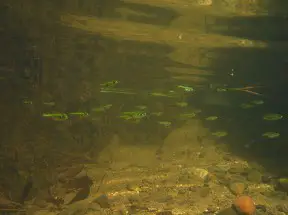
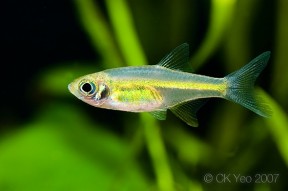
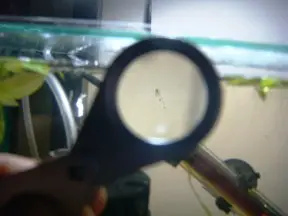
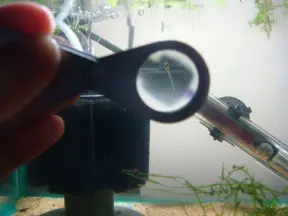
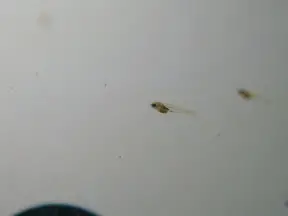





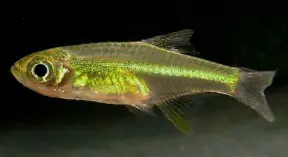



August 26th, 2017 at 8:35 pm
My M. Kubotais are bigger, almost as big as paracheirodon Innesi. ~3 cm for sure.
April 1st, 2019 at 3:51 am
Great write up. This fish is a gorgeous coloration and a realy reason to get a good sized school. That being said, these guys are DIVAS. So, as an FYI, if you’ve moved them after acclimating or out of Quarantine or just from one tank to another, even after matching all water parameters, at least one of them would lay on the substrate belly up and for all intents and purposes, appearing dead, as a doornail. Trust me, if this happens to you LEAVE it alone for a bit, and you’ll come back and it will have completely recovered. That’s why I call them Divas.
In addition, I find them to be a bit nasty. So, just be aware of that. For example, they love love love extremely high flow water. If you have an HOB for example, be aware that they will snap at anyone who interferes with their ability to be IN the flow. And when in a tank with other fish who like that, you may want to ensure you have 2 waterfalls for example, because they’re not big sharers. I had them in a 20 long with a school of male Endlers, school of Dwarf Corydoras habrosus, school of Clown Killifish, an orphan Oto, an orphan Dwarf Gold Barb, Amano Shrimp. No behavioral problems other than the chasing of the other fish out of their high flow region, only a problem with the Endlers who also like flow. My 20 long had both an Aqueon 10 HOB and an Aquaclear 50 (and a small sponge filter). Because they were not big sharers, I chose to move the school of 8 to a 29 with a Fluval 70 and an Aqueon 30 (and a gigantic sponge filter on high bubble output which they don’t even bother with lol) and female Endlers. Because there is significantly more area for them to be in the flow, this might be something to consider; I originally added 8, but it is hard to find them in the female Endler tank because the coloration is just similar in tonal quality and the kubotai move SOO fast. I urge people to really go for the larger schools and keep with a bottom dweller. I’m sure the nippyness was due to the shallow depth of a 20 long and the need to share with the male Endlers. When I see them again, I intend on adding to the school size in hopes of reducing their need to nip fish in their vicinity.
To close though, it’s a great beautiful fish and when I say nip, they do not do any damage, it’s more like a snarl as opposed to a bite. So, do not think misinterpret my “warnings.” And I also agree these fish are larger than supposedly meant to be. At least an inch, most likely a little more. Definitely larger than the Boraras mentioned. Also maybe a tad larger than the Ember Tetra as a size guide, but not by too much. They are a fuller bodied fish than the Boraras species.
Also, the mention of having excellent water quality is definitely important. If your Nitrates rise higher than they like, you will see behavior issues a kin to sort of not being able to maintain a normal swimming posture, sort of like the beginning of swim bladder for lack of a better example. All you need to do is a 50% water change and the behavior is back to normal. Just something to consider. Hope all this helps.